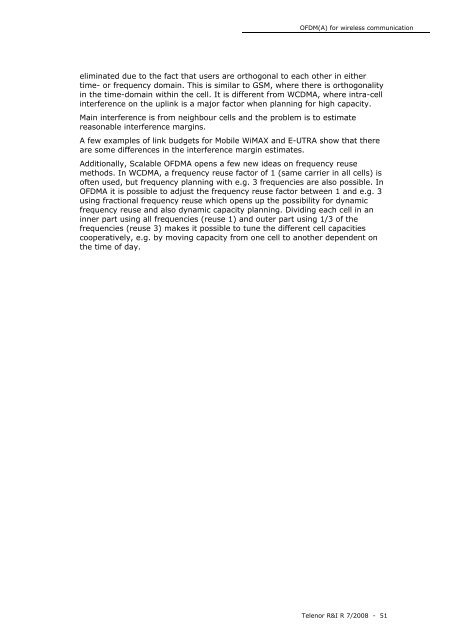OFDM(A) for wireless communication - Unik
OFDM(A) for wireless communication - Unik
OFDM(A) for wireless communication - Unik
Create successful ePaper yourself
Turn your PDF publications into a flip-book with our unique Google optimized e-Paper software.
<strong>OFDM</strong>(A) <strong>for</strong> <strong>wireless</strong> <strong>communication</strong>eliminated due to the fact that users are orthogonal to each other in eithertime- or frequency domain. This is similar to GSM, where there is orthogonalityin the time-domain within the cell. It is different from WCDMA, where intra-cellinterference on the uplink is a major factor when planning <strong>for</strong> high capacity.Main interference is from neighbour cells and the problem is to estimatereasonable interference margins.A few examples of link budgets <strong>for</strong> Mobile WiMAX and E-UTRA show that thereare some differences in the interference margin estimates.Additionally, Scalable <strong>OFDM</strong>A opens a few new ideas on frequency reusemethods. In WCDMA, a frequency reuse factor of 1 (same carrier in all cells) isoften used, but frequency planning with e.g. 3 frequencies are also possible. In<strong>OFDM</strong>A it is possible to adjust the frequency reuse factor between 1 and e.g. 3using fractional frequency reuse which opens up the possibility <strong>for</strong> dynamicfrequency reuse and also dynamic capacity planning. Dividing each cell in aninner part using all frequencies (reuse 1) and outer part using 1/3 of thefrequencies (reuse 3) makes it possible to tune the different cell capacitiescooperatively, e.g. by moving capacity from one cell to another dependent onthe time of day.Telenor R&I R 7/2008 - 51

















